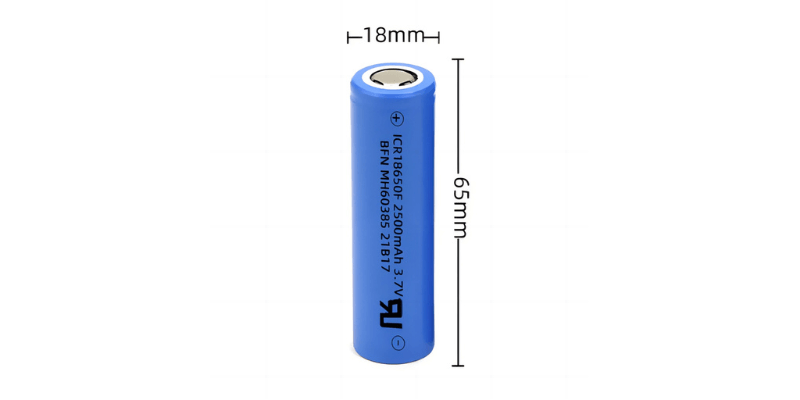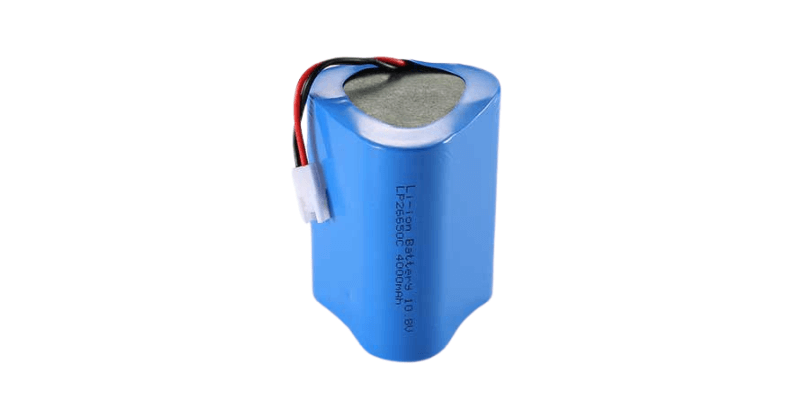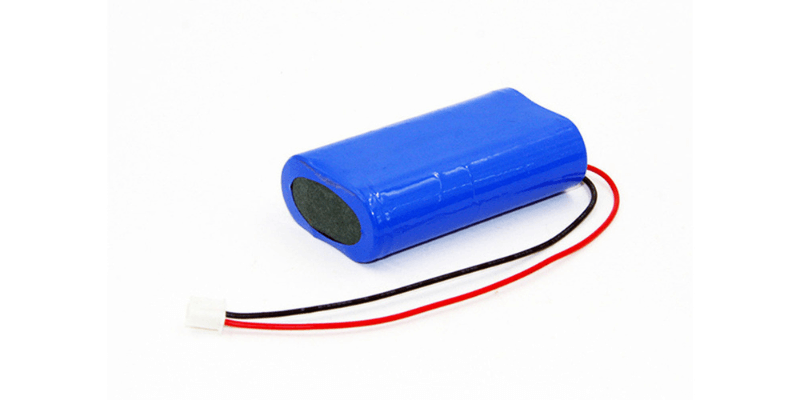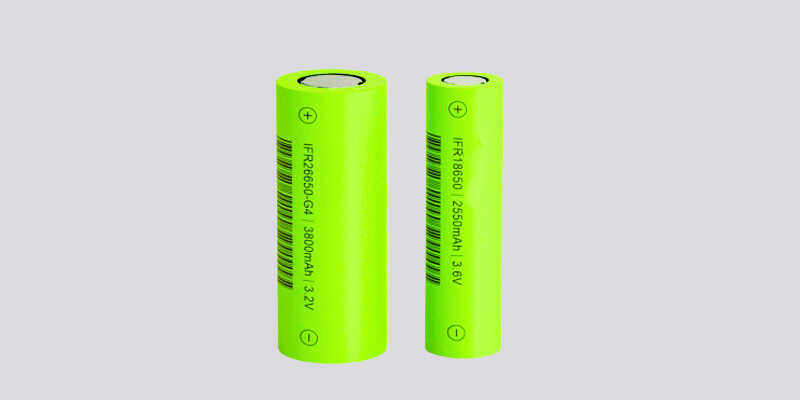Key Takeaways:
- 18650 Batteries: Compact, affordable, ideal for consumer electronics.
- 26650 Batteries: Larger, higher capacity, perfect for high-drain applications.
18650 and 26650 represent two of the most popular lithium-ion battery size classes. But what exactly sets them apart? This comprehensive guide provides an in-depth comparison of 18650 vs 26650 batteries.
At a Glance: 18650 vs 26650
| Parameter | 18650 Battery | 26650 Battery |
| Diameter | 18mm | 26mm |
| Length | 65mm | 65mm |
| Capacity | 1200-3600mAh | 2500-6000mAh |
| Voltage | 3.6-3.7V | 3.6-3.7V |
| Applications | Laptops, flashlights, vapes | Power tools, EVs, high-drain devices |
Now let’s explore the key factors in detail…
18650 Batteries – The Compact Powerhouse
The 18650 li-ion battery offers an optimal balance of energy density and portability.
Major applications include:
- Laptop battery packs
- High-end flashlights
- Vaping devices
- Power banks
Advantages:
Smaller size, lower cost, readily available, sufficient capacity and power delivery for many consumer applications.

Limitations:
Lower capacity compared to alternatives like 26650, not ideal for high-drain applications, fewer charge cycles generally.
In summary, the 18650 strikes an excellent balance between moderate power output and portable size.
26650 Batteries – Unleashing Maximum Performance
With a 26mm diameter, the 26650 offers substantially higher capacity and current handling capability.
Key applications include:
- Power tools
- Electric vehicles
- Energy storage
- High-powered flashlights
Benefits:
Very high capacity, excellent high-drain performance, higher energy density, long lifespans.
Tradeoffs:
Larger size can limit compatibility in compact devices, more expensive than 18650, generates more heat at very high discharge rates.
For high-drain roles where sustained maximum power is critical, the 26650 is the top choice.

Detailed Specification Comparison
| Parameter | 18650 Li-ion | 26650 Li-ion |
| Diameter | 18mm | 26mm |
| Length | 65mm | 65mm |
| Capacity Range | 1200-3600mAh | 2500-6000mAh |
| Voltage Range | 3.6-3.7V | 3.6-3.7V |
| Max. Discharge Current | 15-20A | 30-35A |
| Energy Density Range | 150-250Wh/L | 250-400Wh/L |
| Cycle Life | 300-500 cycles | 500-1000 cycles |
Observations:
- 26650 has 46% more surface area, enabling higher capacity.
- Discharge capabilities are superior on 26650.
- Energy density, lifespan and efficiency are higher with 26650.
- Voltage range is similar, since both utilize lithium-ion chemistry.
Real-World Performance Comparison
The 26650 outperforms 18650 across usage metrics:
- 70% longer runtimes
- 50-75% higher discharge rates
- Better heat dissipation under very high loads
- 5-10% greater energy efficiency
- 2x lifespan – 800 cycles vs 400 cycles typically
So the 26650 demonstrates clear advantages in high-drain applications requiring maximum, sustained power delivery.

Battery Safety Tips and Best Practices
Lithium-ion batteries are generally safe when handled properly, but it’s vital to take precautions like:
- Using the recommended charger and avoiding overcharging
- Storing batteries properly – cool, dry place
- Preventing short circuits and physical damage
- Monitoring temperatures during use
- Recycling batteries at designated facilities
Following basic safety measures goes a long way.
Choosing the Right Battery – 18650 or 26650?
Consider device dimensions, power requirements, intended runtime, cost, and high drain needs. The 18650 capacity/size suits most consumer electronics. But the 26650 is better for advanced high-power applications.

Frequently Asked Questions
How do 18650 and 26650 batteries compare for vaping devices?
For most vaping purposes, the 18650 capacity and discharge performance is adequate. But advanced vapers may want the extra power of a 26650 for sub-ohm setups requiring very high wattage.
Can a 26650 replace an 18650 in my laptop battery?
Not recommended. The larger 26650 likely won’t fit properly in the laptop’s battery compartment. Stick to the OEM battery specs.
How many 26650 cells are needed to match a 48V lead-acid battery?
With the 26650 nominal voltage around 3.7V, you would need 48V / 3.7V = 13 cells connected in series to equal a 48V lead-acid battery voltage.
For an electric bike, is it better to use 18650 or 26650 battery packs?
For e-bikes, the higher capacity 26650 makes sense to extend range. Just ensure proper mounting to accommodate the larger battery size.
How do I dispose of old 18650 and 26650 batteries safely?
Find a reputable lithium-ion battery recycling facility in your region. Some retailers also accept battery recycling. Never throw lithium batteries in the trash.
Conclusion
The 18650’s compact size makes it well-suited for consumer electronics, while the high-capacity 26650 excels in high-drain applications. Each battery size serves distinct needs. We hope this guide has assisted you in choosing the ideal battery for your specific use case.
Related Articles:

